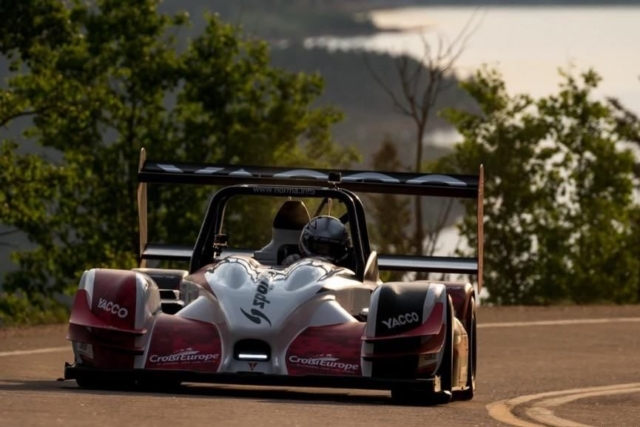At the top of the illustrious peak, drivers will ingest a roughly 55 percent of the air their bodies are accustomed to consuming at sea level. This not only makes the driver’s job a grueling task, where contenders feel like they cannot physically draw enough breath regardless of how hard they draw breath, but engines suffer as well. Without much air to pump into the cylinders, the power output drops significantly, and the overall performance suffers greatly at the last few thousand feet.
For this reason, turbocharged engines rule the timesheet at Pike’s Peak. Because the turbocharger acts as an air compressor, their power loss at altitude is significantly less than their atmospheric competitors. Yes, the turbocharger is strained as it has to work even harder to produce the same amount of power as it climbs, but it isn’t limited in the way it can ingest air like a normally-aspirated engine is.
While Peugeot’s record is nigh-untouchable, there have been a few valiant efforts made, and Dumas — another French contender — managed to nab the second spot this year in his custom Norma M20 prototype. The carbon monocoque-clad car was pared down to a meager 1,350 pounds, and fitted with a boosted Honda K20A tuned by Honda’s Performance Division.

Despite four wheel-drive on command, the frantic sawing at the wheel suggest this car is a real handful.
Those 450 force-fed ponies are delivered via a six-speed sequential ‘box from Sadev, the illustrious French manufacturer which supplies the gearboxes for WRC cars as well as Ken Block’s Hoonicorn. For added traction out of some of the slower corners, the prototype is fitted with a four wheel-drive system. Nevertheless, it still appears to be a bit of a handful, twitching constantly at ludicrous speeds, but a shortened wheelbase will sometimes promote that behavior.
Having those six forward gears accessed through paddles on the wheel is a considerable advantage on the course, which serves as a public road most of the year, and as a result, can be quite slippery. As Dumas’ frantic sawing at the wheel illustrates just how much oversteer he has to contend with, those 14-inch-wide rear slicks are certainly taking a beating, and won’t last much longer than the 8 minutes and 45 seconds it took to get to the top.
On the way up, Dumas used all the performance offered by the aero package and the AP Racing brakes, which offer demonstrably strong braking performance, though one has to assume that a driver as savvy as Dumas must leave a little in reserve. A lockup could lead to a long, uncomfortable tumble down the hillside.
Nevertheless, the rate of deceleration is awe-inspiring, especially at the end of long straights into hairpins, notably at 3:50. Without a puff from the front tires, the car seems to deploy an invisible parachute and chops that speed in half instantly, demonstrating the Frenchman’s incredible resolve and delicate touch at the wheel. This man is a Le Mans star, after all.






















